Last time we looked at one of Ricoh’s upmarket cameras, the Ricoh GR, we went all Victor Kyam and liked the camera so much we went out and bought the thing, and Ricoh’s new GX100 has got our wallet hand twitching again.
 Never a company to run with the pack, the new Ricoh Caplio GX100 serves up an innovative feature set, with a super wide 24 to 72 mm wide zoom lens (35mm film equivalent), a fast F2.5 aperture and 10.01 Megapixel CCD sensor.
Never a company to run with the pack, the new Ricoh Caplio GX100 serves up an innovative feature set, with a super wide 24 to 72 mm wide zoom lens (35mm film equivalent), a fast F2.5 aperture and 10.01 Megapixel CCD sensor.
Billed as the successor to the popular Caplio GX8, the GX100 has inherited some of the features of the GR, including the fabulous two mode dial system which makes up what Professional Photography magazine recently described as the ‘best control system of any compact camera’ (once you get used to it, Canon and Nikon compacts seem clunky in comparison).
 Another innovation that has set photo-nerd hearts a-fluttering in Chez Digi Lifestyles is the optional removable electronic viewfinder.
Another innovation that has set photo-nerd hearts a-fluttering in Chez Digi Lifestyles is the optional removable electronic viewfinder.
This clips on to the hotshoe (yes, it’s got one of them too) and offers a high resolution LCD display including all the necessary exposure information. If they get the quality right, this will be as close as you can get to a real street shooter experience in a camera this size.
Architecture and landscape fans will also like the optional ultra-wide-angle 19mm lens for those big panoramic shots, with spot-on exposures guaranteed via a host of manual and scene modes and RAW file recording.
 As with the GR, macro focussing goes all the way down to a frankly ridiculous 1 cm (any closer and you’ll be burrowing into the subject), with a built in CCD shift method offering vibration reduction.
As with the GR, macro focussing goes all the way down to a frankly ridiculous 1 cm (any closer and you’ll be burrowing into the subject), with a built in CCD shift method offering vibration reduction.
Ricoh claim that their ‘Smooth Imaging Engine II’ image-processing engine will keep the noise down, but with so many pixels packed onto such a small sensor, we expect the processor will be kept busy.
 With the Ricoh Caplio GX100 measuring up at just 25mm, this looks to be a great carry everywhere camera, and with a claimed battery life of 380 exposures, this looks to be a very, very interesting camera.
With the Ricoh Caplio GX100 measuring up at just 25mm, this looks to be a great carry everywhere camera, and with a claimed battery life of 380 exposures, this looks to be a very, very interesting camera.
European pricing hasn’t been announced yet, but a Japanese site is quoting a retail price of 80,000 Yen (approx $670, 500 Euro, £340).
Specifications:
CCD Effective 10.01 million pixels (total 10.30 million pixels ), 1/1.75-inch primary-colour CCD
Lens Focal length f=5.1 to 15.3 mm (equivalent to 24 to 72 mm for 35 mm film cameras)
Aperture (F value): F 2.5 – F9.1 (Wide-angle) , F4.4 – F15.8 (Telephoto)
Lens structure 11 glass elements in 7 groups
Shutter speed 180, 120, 60, 30, 15, 8, 4, 2, 1 to 1/2000 sec. 1/30 – 1/2000 sec.
Picture modes F (Fine) / N (Normal) / RAW *2
Exposure adjustment TTL-CCD Metering Method: Multi Light Metering (256 segments),
Centre-weighted Light Metering, Spot Metering
White balanced Auto, Fixed (OUTDOORS, CLOUDY, INCAND., FLUORES., MANUAL) / White Balance Bracket
 Memory SD Memory Card ( 32, 64, 128, 256, 512 MB, 1, 2 GB), SDHC Memory Card (4 GB),
Memory SD Memory Card ( 32, 64, 128, 256, 512 MB, 1, 2 GB), SDHC Memory Card (4 GB),
Multi Media Card, Internal Memory (26 MB)
Recording modes Still image modes (Still Image, CONT., S-CONT, M-CONT), Program Shift, Aperture-Priority,
Manual Exposure modes, Scene modes (Portrait, Sports, Landscape, Nightscape,
Skew correction, Text, Zoom macro, High Sensitivity) , Movie mode, My setting 1&2
LCD 2.5-inch Transparent Amorphous Silicon TFT LCD (approx. 230,000 pixels)
Dimensions 111.6 mm (W) x 58.0 mm (H) x 25.0 mm (D) (excluding projections parts)
Weight Approx. 220 g (excluding batteries, Memory Card, strap), Accessories: approx. 30 g (battery, strap)
Battery Rechargeable battery (DB-60) x 1, optional AC adaptor (AC-4c), AAA battery (alkaline/oxyride/NiMH) x 2
Shooting capacity Conforms to CIPA standard: using the DB-60, approx. 380 pictures
(Using AAA alkaline batteries: approx. 35 pictures *4)
Ricoh GX100
 Official confirmation of the European release has this morning been announced – and it’s to arrive in two flavours.
Official confirmation of the European release has this morning been announced – and it’s to arrive in two flavours. The world’s top handset maker Nokia has announced that it expects to start shifting mobile devices using the WiMAX Internet technology by early 2008.
The world’s top handset maker Nokia has announced that it expects to start shifting mobile devices using the WiMAX Internet technology by early 2008.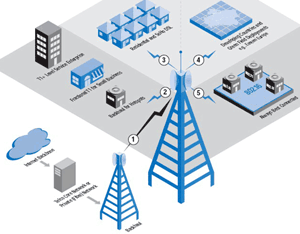 Nokia’s numero uno handset rival, Motorola, has announced that it fancies a piece of the WiMAX action too, saying that they’ll also be bringing a WiMAX enabled mobile phone to market in 2008.
Nokia’s numero uno handset rival, Motorola, has announced that it fancies a piece of the WiMAX action too, saying that they’ll also be bringing a WiMAX enabled mobile phone to market in 2008. A planned rollout will veritably bathe the City in luverly Wi-Fi rays, letting around 350,000 workers wander all over the Square Mile with uninterrupted wireless access.
A planned rollout will veritably bathe the City in luverly Wi-Fi rays, letting around 350,000 workers wander all over the Square Mile with uninterrupted wireless access.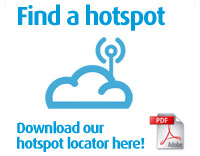 “We have been meeting a lot of the big financial institutions in the area and have even found that the network is available in a lot of their boardrooms, so we think there will be a corporate use for it as well,” he added.
“We have been meeting a lot of the big financial institutions in the area and have even found that the network is available in a lot of their boardrooms, so we think there will be a corporate use for it as well,” he added.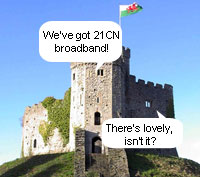 Also a single network would have meant it could go to many more of the 5,600 DLEs than the 1,200 everyone’s competing for at the moment.
Also a single network would have meant it could go to many more of the 5,600 DLEs than the 1,200 everyone’s competing for at the moment.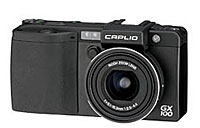 Never a company to run with the pack, the new Ricoh Caplio GX100 serves up an innovative feature set, with a super wide 24 to 72 mm wide zoom lens (35mm film equivalent), a fast F2.5 aperture and 10.01 Megapixel CCD sensor.
Never a company to run with the pack, the new Ricoh Caplio GX100 serves up an innovative feature set, with a super wide 24 to 72 mm wide zoom lens (35mm film equivalent), a fast F2.5 aperture and 10.01 Megapixel CCD sensor.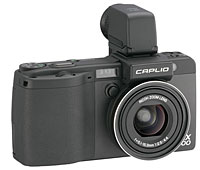 Another innovation that has set photo-nerd hearts a-fluttering in Chez Digi Lifestyles is the optional removable electronic viewfinder.
Another innovation that has set photo-nerd hearts a-fluttering in Chez Digi Lifestyles is the optional removable electronic viewfinder.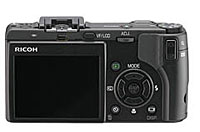 As with the GR, macro focussing goes all the way down to a frankly ridiculous 1 cm (any closer and you’ll be burrowing into the subject), with a built in CCD shift method offering vibration reduction.
As with the GR, macro focussing goes all the way down to a frankly ridiculous 1 cm (any closer and you’ll be burrowing into the subject), with a built in CCD shift method offering vibration reduction.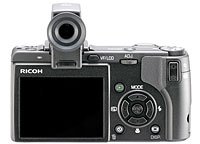 With the Ricoh Caplio GX100 measuring up at just 25mm, this looks to be a great carry everywhere camera, and with a claimed battery life of 380 exposures, this looks to be a very, very interesting camera.
With the Ricoh Caplio GX100 measuring up at just 25mm, this looks to be a great carry everywhere camera, and with a claimed battery life of 380 exposures, this looks to be a very, very interesting camera. Memory SD Memory Card ( 32, 64, 128, 256, 512 MB, 1, 2 GB), SDHC Memory Card (4 GB),
Memory SD Memory Card ( 32, 64, 128, 256, 512 MB, 1, 2 GB), SDHC Memory Card (4 GB), Since the operators all want to get into the same exchanges, there’s overcrowding and BT have to install new hostel space (the space where operators can put their own equipment into) which causes delays. It can take more than 6 months from when an operator puts an order in to being granted access to an exchange.
Since the operators all want to get into the same exchanges, there’s overcrowding and BT have to install new hostel space (the space where operators can put their own equipment into) which causes delays. It can take more than 6 months from when an operator puts an order in to being granted access to an exchange.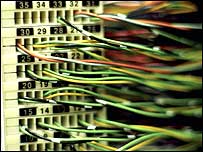 Unfortunately the economics of LLU only work if there’s a lot of customers per exchange i.e. massive scale.
Unfortunately the economics of LLU only work if there’s a lot of customers per exchange i.e. massive scale. It’s not just old content that will be available, but new productions from Paramount including DreamWorks titles, which will be among the latest films available.
It’s not just old content that will be available, but new productions from Paramount including DreamWorks titles, which will be among the latest films available.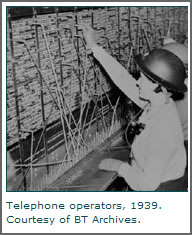 What is Local Loop Unbundling (LLU)?
What is Local Loop Unbundling (LLU)?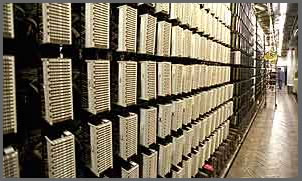 Any operator wanting to offer broadband (and possibly voice) has to put their equipment in these DLEs. However there is a cost to unbundling an exchange (around 100,000 including backhaul) which means operators are only targeting the most densely populated ones.
Any operator wanting to offer broadband (and possibly voice) has to put their equipment in these DLEs. However there is a cost to unbundling an exchange (around 100,000 including backhaul) which means operators are only targeting the most densely populated ones. In the same way that UK frequencies are being freed up by analogue TV going digital, a big chunk of valuable frequency will also be coming up for grabs in the US too. The big difference is that the US one is coming up a lot sooner, with the US government having mandated that their analogue switch off occurs on 19 Feb 2009.
In the same way that UK frequencies are being freed up by analogue TV going digital, a big chunk of valuable frequency will also be coming up for grabs in the US too. The big difference is that the US one is coming up a lot sooner, with the US government having mandated that their analogue switch off occurs on 19 Feb 2009. The 700-megahertz frequency is highly favoured as it has a significant capacity, good range and can easily penetrate buildings and other structures.
The 700-megahertz frequency is highly favoured as it has a significant capacity, good range and can easily penetrate buildings and other structures.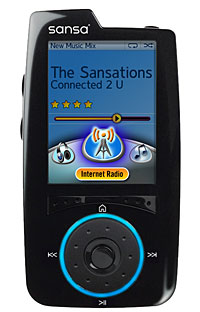 After connecting the Sansa Connect media player to the Internet via Wi-Fi, users will be able to listen to LAUNCHcast Internet radio, rummage through Flickr photos and check out what Yahoo Messenger friends and nearby Sansa Connect owners are grooving to.
After connecting the Sansa Connect media player to the Internet via Wi-Fi, users will be able to listen to LAUNCHcast Internet radio, rummage through Flickr photos and check out what Yahoo Messenger friends and nearby Sansa Connect owners are grooving to. “We see this as a very strong partnership with Yahoo,” purred top SanDisk marketing bod Eric Bone, adding that he saw his company progressing from “fast-follower mode to a technical-leadership mode” in a market still dominated by the ubiquitous iPod.
“We see this as a very strong partnership with Yahoo,” purred top SanDisk marketing bod Eric Bone, adding that he saw his company progressing from “fast-follower mode to a technical-leadership mode” in a market still dominated by the ubiquitous iPod.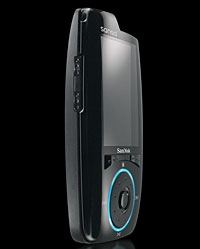 As well as wirelessly connecting to Yahoo’s Music service, the Connect supports MP3s and DRM WMAs provided by other services like Rhapsody, but you’ll have to get out Ye Olde cable to transfer the music from your desktop.
As well as wirelessly connecting to Yahoo’s Music service, the Connect supports MP3s and DRM WMAs provided by other services like Rhapsody, but you’ll have to get out Ye Olde cable to transfer the music from your desktop.